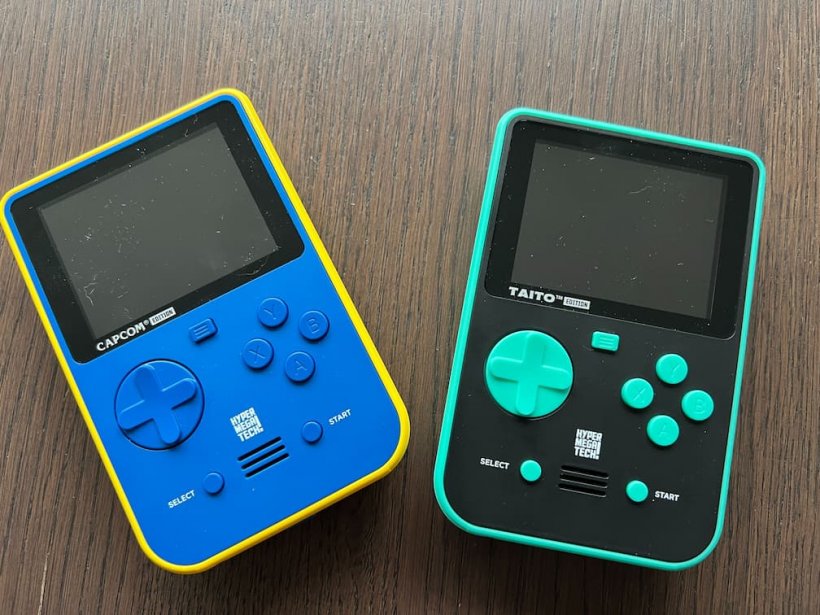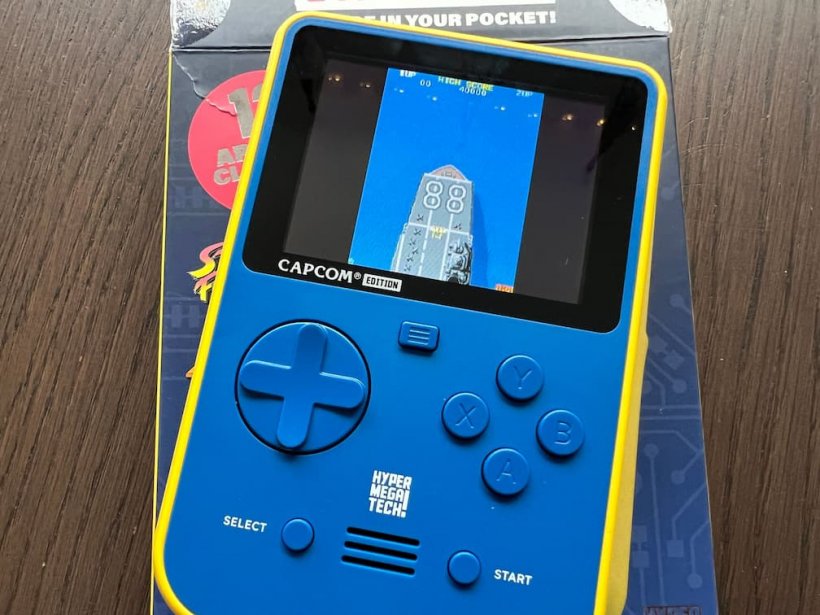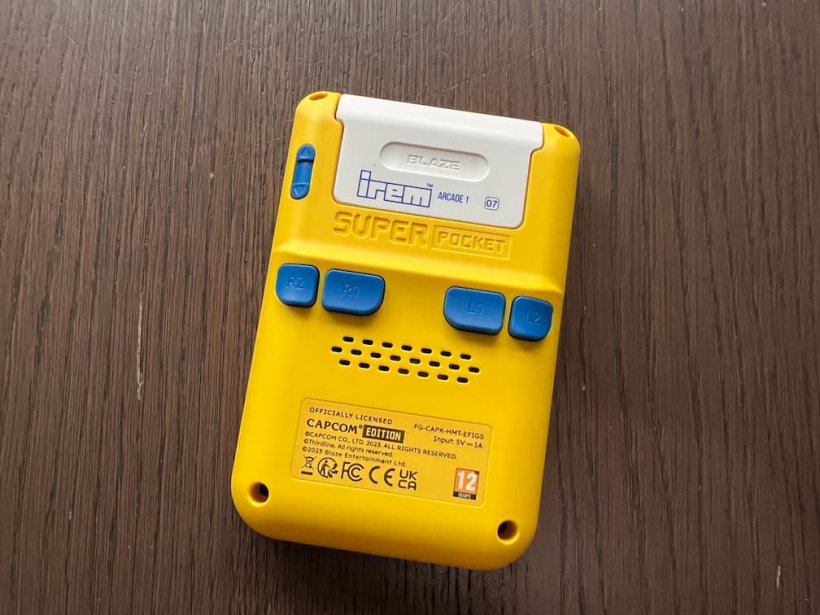- The Super Pocket is an incredibly well-made handheld console that includes onboard retro games.
- There are two models, but you can also insert Evercade cartridges into it, and there are hundreds of games available that way.
- It’s costly, but if you view it as a console, with the Evercade library at hand, it’s generously priced.
Pocket Gamer has been around for absolute ages. In fact, I was just recently rummaging around the archives and stumbled across an amazing .GIF that used to adorn our sidebar back in 2016, complete with GBA, PSP, the OG DS and even an NGage (hah!).
A lot has changed in the (nearly eighteen) years that have passed since that poorly optimised, chunky GIF was uploaded, but perhaps the most impressive thing is that there are more handheld games available to play than anybody could have even imagined. While we pretty much exclusively cover mobile games these days, we simply had to try out The Super Pocket, from Hyper Mega Tech, mainly because dedicated handheld console gaming is pure nostalgia these days. Even Nintendo have abandoned the handheld market with their hybrid gambit. But the Super Pocket is a special kind of nostalgia because it predates even Grampa Pocket Gamer.
Shocking. I know.
Super Pocket takes you back to the 80 and 90s. There are two models available, one made in partnership with Capcom and another with Taito. Each is a tour de force of the publisher’s arcade offerings, with Capcom offering up twelve titles, including 1942, Final Fight, Street Fighter II and Mega Man, and Taito offering up 18, including Space Invaders, Bubble Bobble, Don Doko Don, Volfied and even The NewZealand Story.
As a note, these are ports of the arcade versions, meaning any console or port modifications (like “motherfuckenkiwibastards” as a cheat code for NewZealand Story on Amegi) are not included in this. But, that’s relevant — the porting, not the cheat codes — and I’ll get back to that later.

Both the Taito Edition Super Pocket and Capcom Edition Super Pocket are beautiful, coming in at 3.5″ wide and 5″ long. It’s incredibly reminiscent of the original Game Boy. In fact, the width is pretty much perfect, and it’s only a little shorter than the GameBoy Classic — maybe that’s why I’m so drawn to the Capcom Edition in its stark blue face and yellow-bodied design since it’s almost a surrogate for my old Donkey Kong, banana-yellow Game Boy.
That’s the point, this whole thing trades on nostalgia, and it does it well. Sure, I don’t think a single one of the 30 games available across the two models ever launched on the Game Boy, but they’re enhanced by the familiarity — even if it is a bit uncanny — of these two retro concepts being smashed together.

The Super Pockets are deceptively well made too. The buttons all feel responsive, and the one-piece directional pad (the thing of nightmares to Master System owners, surely) rolls perfectly, but each of the directions is raised enough that it feels natural in games without diagonal inputs. Then there are the buttons on the back. There are four of them, which your index fingers can slide along — it feels natural and doesn’t take long to adjust to.
I was a bit confused by the volume rockers, which masquerade as two buttons shaped like a slider, especially considering that the volume is numerical steps, rather than a rolling number. But, that’s just a bit of a pet peeve. Another, as I’m onto those now, is that the four buttons on the back, and the shelf above them, are raised in such a manner that the whole device rests/wobbles on them when it’s on its back.

There is absolutely no faulting the choice of games that come built into each of the devices, although it is a little bit of a shame that there’s not some method of linking multiple devices together to run multiplayer on some of the games. Considering that it comes with a USB-C port for charging, I am curious as to whether that could be on the horizon.
The interface is really easy to use, with a carousel of the included games displayed from boot-up. Once in you’ll need to press Select to insert coins, but everything from there is self-explanatory. There’s a menu button which can display controls, save the game and also let you tinker with the display and scanline settings — on the main menu, though, it lets you change language, difficulty and also switch to any inserted Evercade cartridges.
Finally, the elephant in the room. The Super Pockets are Evercade adjacent, in so much as they’re made by the same company, come with an Evercade advert built in (if you don’t have a cart) and can accept Evercade cartridges via a top-loading slot on the back. I really like this. Evercade has been expanding its library over the years and has managed to persist in the ‘Official Emulation’ space where dozens have failed — they don’t seem to be going anywhere, and the chance to play Evercade cartridges on the go is really cool.

All of that said, official emulation, preservation, reissuings… whatever you call it… it’s a really expensive game to get into. Perhaps ironic considering the ROM & emulation scene is widely considered adjacent to piracy. The Super Pocket will cost you a lot more than pocket change, but it’s a great bit of kit for collectors; it runs smoothly, it’s a great size and both designs look stunning.
